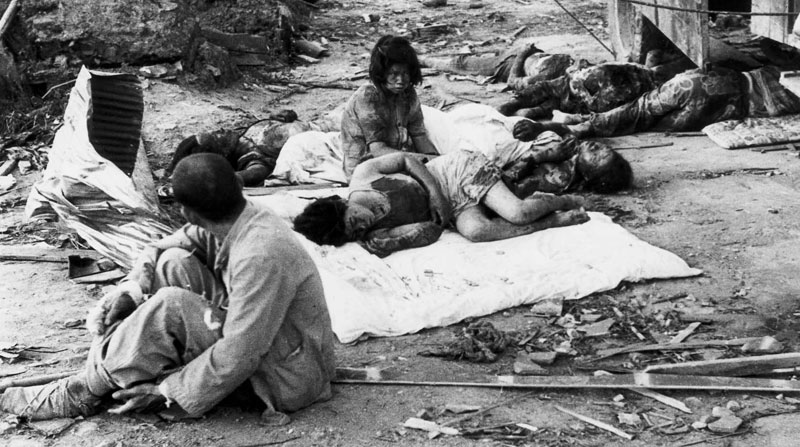

Dr. Martin Luther King, Jr. once said that in this world there is no longer a choice between violence and nonviolence, the choice is nonviolence or nonexistence. That is precisely the message sent by the “Hiroshima Speaks” exhibition at the Sojourner Truth Library.
The display of photographs and information are meant to give viewers a deeper understanding about the horrifying events that took place in Hiroshima on Aug. 6, 1945. There are images of the billowing mushroom cloud, the destruction of the city and the damage done to human bodies from burns and radiation. The exhibit includes pictures of burnt tricycles and scorched lunch boxes belonging to children who died during the bombing. The exhibition sparks a discussion on nuclear weapons, igniting complex questions about why they are used against humanity. It also informs viewers of how choosing violence instead of peace causes devastation and destruction for everyone.
The story of Sadako Sasaki shows the effects of nuclear bombs years after exposure. Sasaki was two years old at the time of the bombing. She was hospitalized 10 years later and diagnosed with leukemia. Sasaki believed that if she made 1,000 paper cranes her illness could be cured. She died after eight months of living with the disease, never completing her goal. A monument, displayed in a photo at the exhibition, was erected in Hiroshima Peace Memorial Park to honor her memory and spirit. There is also a display filled with dozens of colorful paper cranes made by students, staff, faculty and passersby in the library.
The idea for the exhibition came from John Kares Smith, chair of the communication studies department at State University of New York (SUNY) Oswego, and his colleague Dr. Alok Kumar, chair of the physics department, who assisted in getting the campus resources. Smith is a personal friend to the Mayor of Hiroshima, Tadatoshi Akiba, who has made efforts in ridding the world of nuclear weapons.
“This exhibition is not at all about blame or recriminations; it is time to learn, to meditate, to re-commit ourselves to the road of peace,” said Smith. “After all, wars never decide who is right, they decide who is left.”
Kosuke Kisaka, alumni of SUNY Oswego, was involved in the original exhibition at Penfield Library in spring 2009. It was his idea to fold 1,000 paper cranes and send them to the Children’s Peace Monument in Hiroshima Memorial Park.
Kisaka was born and raised in Hiroshima, and two of his family members were victims of the atomic bomb. He hopes the exhibit will give people an awareness of the lethal effects of nuclear weapons.
“This exhibit means a lot to me,” Kisaka said. “So many who otherwise wouldn’t have been informed and exposed to these images and the reality of the A-bomb now have a chance to look at it, and maybe this experience will affect those who see the exhibit to think about the A-bomb and its awfulness.”
